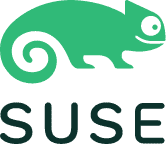Containers are everywhere. Despite application containers being around for only a few years, they have already become an important building block of modern application development. But their popularity has made them a target for hackers, making container security an important area to supplement in the already extensive cybersecurity portfolio.
Jump to:
- The Need for Container Security
- Key Container Security Features
- Container Security Trends
- Best container security companies
The Need for Container Security
Containers owe their popularity to their lightweight, building block approach. They contain everything required to run applications, such as code, runtime, tools, libraries, and settings. Containers can also run on top of an operating system (OS) as designed, regardless of the environment, so they’re more portable than virtual machines (VMs) and require fewer resources.
Container platforms such as Docker and Kubernetes include some native security controls, but as containerized application development often includes third-party software components that may have vulnerabilities, containers can be susceptible to rogue processes that are able to bypass the isolation that makes containers so valuable.
That opens the door to unauthorized access to other container images, and if the container image itself includes a vulnerability, it can then be deployed unwittingly in applications. Misconfigured permissions can multiply these problems, so container security is too critical to be taken lightly.
Key Container Security Features
Container security tools address a great many areas, but they should provide most of the following:
- Image scanning
- Runtime security
- Threat detection and vulnerability scanning
- Network security
- Incident response and forensics
- Compliance
- Integration with DevOps and security information and event management (SIEM) tools
See the Top Code Debugging and Code Security Tools
Container Security Trends
Perhaps the biggest trend in container security of late relates to the rise of Kubernetes networking. Kubernetes enables real-time communication between containers and applications, facilitates microservices, and drives innovation in containerized workloads and overall performance. Much of this innovation is being led by hyperscalers such as Google, Facebook, Microsoft, and Amazon in their quest to achieve the highest possible level of efficiency.
Container technology such as Kubernetes is also driving a wave of network virtualization to address the fact that as more and more workloads are containerized, network traffic escalates. Recent advances in virtual networking include network element virtualization (NEV), network function virtualization (NFV), and software-defined wide area networks (SD-WAN).
In addition, Kubernetes has opened the door to serverless computing — compute over the web rather than via physical servers onsite. Serverless computing relies heavily on the speed with which compute power can be served from the cloud. Because of this, containerization is used heavily in serverless services.
Also read: CNAP Platforms: The Next Evolution of Cloud Security
Best container security companies
Here are our picks for the best security tools for protecting your container environments.
1 Sysdig
Sysdig Secure is a SaaS platform that provides unified security across containers and cloud and is part of the Sysdig Secure DevOps platform. DevOps and security teams can use it to reduce risk with visibility across containers, hosts, Kubernetes, and cloud. It can detect and respond to threats and validate cloud posture and compliance. Additionally, it can maximize performance and availability by monitoring and troubleshooting cloud infrastructure and services.
2 NeuVector
NeuVector takes a networking-focused approach to container security, providing automated segmentation capabilities and attack detection. It includes a container firewall that can filter application layer traffic to help identify anomalous behavior. Using process and file system monitoring with Layer 7 network inspection, unauthorized container activity or connections from containers can be blocked without disrupting normal container sessions.
3 Alert Logic
Alert Logic is a managed detection and response (MDR) provider that secures public clouds, SaaS, on-premises, and hybrid cloud environments. It provides a view of the security vulnerabilities within containerized environments by collecting and analyzing network traffic from the base host and the network traffic to, from, and between containers. Users know within minutes if exploits are actively targeting their container environment.
4 Capsule8
Capsule8 Single lightweight protection that provides runtime visibility, threat detection and response for your Linux infrastructure in the cloud or datacenter. It detects and prevents unwanted activity on Linux systems that may jeopardize containerized environments. Threat models address workloads and container hosts. Capsule* also allows users to create policies leveraging container metadata.
5 Palo Alto Networks Prisma Cloud
Palo Alto Networks acquired container security firms Twistlock and Aporeto, and has incorporated their features into its Prisma cloud application. As a larger suite of cloud-based functions, Prisma Cloud is a cloud-native security platform with security and compliance coverage for users, applications, data, and the cloud technology stack.
6 Aqua Security
Aqua Security was an early pioneer of the container security space. It scans container images based on a stream of aggregate sources of vulnerability data (CVEs, vendor advisories, and proprietary research), which ensures up-to-date coverage while minimizing false positives. Additionally, it can find malware, embedded secrets, OSS licenses, and configuration issues in images.
7 Anchore
Anchore provides products that enable organizations to scan and inspect public and private container images. At the core is an open-source engine to scan images and achieve security compliance. Deployments of container-based infrastructure include a container registry where images are stored. Anchore scans the contents of container registries to ensure they are free from vulnerabilities and comply with security policies.
8 Red Hat
Red Hat moved aggressively into container security with the acquisition of StackRox, which claims an advantage over competitors with its Kubernetes-native architecture, making for richer context, native enforcement, and continuous hardening. In keeping with its open-source heritage, Red Hat plans to open source StackRox technology.
9 Snyk
Snyk offers a security solution specifically designed with developers in mind. It searches for license violations in Docker images and provides a vulnerability report for each package in a repository. Snyk supports a variety of programming languages, and customers found it easy to implement. It permits many integrations, including GitHub and GitLab connections for developers to utilize.
Sysdig
Sysdig Secure is a software-as-a-service (SaaS) platform that provides unified security across containers and cloud. DevOps and security teams can use it to reduce risk with visibility across containers, hosts, Kubernetes, and cloud. It can detect and respond to threats and validate cloud posture and compliance. Additionally, it can maximize performance and availability by monitoring and troubleshooting cloud infrastructure and services.
Key Differentiators
- A new Drift Control feature helps teams to detect, prevent, and speed up incident response for containers that were modified in production, also known as container drift
- Malware and cryptomining detection with threat intelligence feeds from Proofpoint Emerging Threats (ET) Intelligence and the Sysdig Threat Research Team
- Digs directly into compromised or suspicious containers with on-demand secured shell access and investigates the blocked executable and communications
- Automates scanning locally in continuous integration and continuous deployment (CI/CD) pipelines and registries without images leaving the environment
- Visualizes network communication between pods, services, and applications inside Kubernetes
- Conducts incident response using granular data with Kubernetes and cloud context and forwards events to SIEM tools like Splunk, QRadar, AWS Security Hub
- Continuously validates cloud security posture and meets compliance standards (e.g., NIST 800-53, SOC2, and PCI) and internal mandates
SUSE Rancher
Formerly NeuVector, SUSE Rancher provides life cycle container security from DevOps pipeline vulnerability protection to automated security and compliance in production. In addition, Rancher includes centralized authentication, role-based access control (RBAC), and Center of Internet Security (CIS) benchmarking.
While the details of the integration are still unclear, SUSE said, “NeuVector will be positioned as a core pillar of a new cloud-native, open-source security effort based on best practices, guidance, and reference architectures within the movement toward zero-trust security adoption.”
Key Differentiators
- NeuVector can be deployed through the Rancher catalog
- Pushes security capabilities across the entire cloud-native footprint
- Ensures container security using network inspection
- NeuVector will be available as an add-on to SUSE Rancher
- Supports the full range of Kubernetes management products in addition to Rancher and including OpenShift, Mirantis, and Tanzu
- Scans for vulnerabilities during the entire CI/CD pipeline
- Uses the Jenkins plug-in to scan during build, monitor images in registries, and run automated tests for security compliance
- Prevents deployment of vulnerable images with admission control, and monitor production containers
- Deploys as a container onto virtual machines or bare metal OS environments
- Scanning and admission control during build, test, and deployment
- Layer 7 container firewall
Alert Logic
Recently acquired by HelpSystems, Alert Logic is a managed detection and response (MDR) provider that secures public cloud, SaaS, on-premises, and hybrid cloud environments. It provides a view of targeted vulnerabilities or configurations within containerized environments by collecting and analyzing logs and the network traffic to, from, and between containers. Users know within minutes if exploits are actively targeting their container environment, if they were successful, which containers are compromised, and how to respond.
Key Differentiators
- Augments existing cybersecurity resources and technology to safeguard on-premises, cloud, SaaS, and hybrid infrastructures
- Helps meet regulatory requirements, including PCI DSS, HIPAA HITECH, GDPR, Sarbanes-Oxley (SOX), SOC 2, NIST 800-171 and 800-53, ISO 27001, and COBIT
- Detect cyberattacks in real-time by analyzing the signature of data packets as they traverse containerized environments
- Collect, aggregate, and search container application logs to gain insight into container activity for optimal security and compliance
- Make your security as portable as your containers across cloud, hybrid, and on-premises environments
- Build a better view of security impacts with a graphical representation of the compromised container and its relationships
- Get proactive notifications from security experts when suspicious activity occurs
- Single integrated solution to protect all workloads — whether in a container or not
- Support for AWS, Azure, Google Cloud Platform, hybrid, and on-premises environments
- Addresses any workload in any container (Docker, Kubernetes, Elastic Beanstalk, Elastic Container Service, CoreOS, and AWS Fargate)
Sophos
Sophos acquired Capsule8, a tool that detects and prevents unwanted activity on Linux systems that may jeopardize containerized environments. Threat models address workloads and container hosts. The product also allows users to create policies leveraging container metadata.
Key Differentiators
- Runtime visibility, detection, and response for Linux production servers and containers covering on-premises and cloud workloads
- Sophos is integrating Capsule8 into its Adaptive Cybersecurity Ecosystem (ACE), providing Linux server and cloud container security within this one platform
- Capsule8 technology will be included with other Sophos tools such as Extended Detection and Response (XDR), Intercept X server protection products, and Sophos Managed Threat Response (MTR) and Rapid Response services
- Protects cloud-native systems; orchestrators; and container runtimes such as Docker, containers, and CRI-O
- Restrict the ability for specific containers to write new files, run new programs after startup, read cloud metadata, have multiple users running, make outbound network connections, or spawn shells
- Detect unwanted activity on a per-container basis
- Minimize time to recovery by accelerating triage and incident response
Palo Alto Networks Prisma Cloud
Palo Alto Networks acquired container security firms Twistlock and Aporeto and has incorporated their features into its Prisma Cloud application. As a larger suite of cloud-based functions, Prisma Cloud is a cloud-native security platform with security and compliance coverage for users, applications, data, and the cloud technology stack.
Key Differentiators
- Scans container images and enforces policies as part of CI/CD workflows
- Continuously monitors code in repositories and registries
- Secures both managed and unmanaged runtime environments
- Combines risk prioritization with runtime protection at scale
- Support for public and private clouds
- Single console for managed and unmanaged environments
- Full life cycle security for repositories, images, and containers
- Aggregates and prioritizes vulnerabilities continuously in CI/CD pipelines and containers running on hosts or on containers as a service
Aqua Security
Aqua Security was an early pioneer of the container security space. It scans container images based on a stream of aggregate sources of vulnerability data, including Common Vulnerabilities and Exposures (CVEs), vendor advisories, and proprietary research, which ensures up-to-date coverage while minimizing false positives. Additionally, it can find malware, embedded secrets, operational support system (OSS) licenses, and configuration issues in images.
Key Differentiators
- Kubernetes Security Posture Management (KSPM) and Kubernetes runtime protection provide policy-driven life cycle protection and compliance for K8s applications
- Dynamic map of running K8s clusters that highlights and rates Kubernetes security risks
- Real-time visibility into namespaces, deployments, nodes (hosts), containers and the images they came from, as well as network connections between and within namespaces
- Powered by Open Policy Agent (OPA), new Kubernetes Assurance Policies apply dozens of rules or add custom rules using Rego expressions
- Works in conjunction with Aqua’s Image Assurance Policies to prevent the deployment of unsafe and non-compliant workloads
- Discover malware hidden in open source packages and third-party images, preventing attacks on container-based applications
- Analyzes images before they arrive in a secure isolated sandboxed environment, examining and tracing behavioral anomalies
- Static and dynamic scanning to create flexible image assurance policies that determine which images would be allowed to progress through the development pipeline and run in clusters or hosts
Anchore
Anchore provides products that enable organizations to scan and inspect public and private container images. At the core is an open-source engine to scan images and achieve security compliance. Deployments of container-based infrastructure include a container registry where images are stored. Anchore scans the contents of container registries to ensure they are free from vulnerabilities and comply with security policies.
Key Differentiators
- Software supply chain management built with the software bill of materials (SBOM) to identify upstream dependencies in source code repositories and monitor for SBOM drift that can indicate malware or compromised software
- Automatically generate SBOMs for all software produced and verify SBOMs for software consumed (both open source and proprietary)
- Use SBOM data to continuously assess security and compliance risks before and after deployment
- Continuously monitor software applications for new or zero-day vulnerabilities that arise
- Extends scanning for dependencies to include source code repositories in addition to support for container scanning through CI/CD, registries, or Kubernetes
- Container registries include Harbor, Quay, JFrog, and DockerHub as well as offerings from AWS, Azure, and Google
- Reports and evaluations can be accessed using the command-line interface (CLI) or Anchore Enterprise UI, and webhooks can trigger action in other systems
- Open-source tools for image inspection and vulnerability scanning perform analysis of container workloads
- Ensures no secrets are present in images such as passwords and API keys
- Identifies non-OS third-party libraries, including Node.js NPM, Ruby GEM, Python PIP, DotNet, and Java archives
Qualys
Qualys Container Security offers visibility into container host security as well as the ability to detect and prevent security breaches during runtime. It gathers images, image registries, and containers spun from images. It also helps to determine if images are cached on different hosts, and identifies containers on exposed network ports running with privileges.
Key Differentiators
- Secures containers whether on-premises and in the cloud
- Enforce policies to block the use of images that have specific vulnerabilities or that have vulnerabilities above a certain severity threshold
- Vulnerability detection and remediation in the DevOps pipeline by deploying plugins like Jenkins or Bamboo or via REST APIs
- Search for images that have high-severity vulnerabilities, unapproved packages, and older or test release tags
- Container Runtime Security (CRS) offers visibility into running containers as well as the ability to enforce policies that govern behavior
- Centralized discovery and tracking for containers and images
- View metadata for containers and images including labels, tags, installed software, and layers
- Coverage of Linux OS distributions to container-centric OSs, applications, and programming languages
Also Read: 34 Most Common Types of Network Security Protections
Red Hat Advanced Cluster Security
Red Hat (part of IBM) moved aggressively into container security in early 2021 with the acquisition of StackRox, which claims an advantage over competitors with its Kubernetes-native architecture, making for richer context, native enforcement, and continuous hardening.
Key Differentiators
- The StackRox project is now the open-source code behind Red Hat Advanced Cluster Security for Kubernetes
- Kubernetes-native architecture leverages Kube’s declarative data and built-in controls for richer context, native enforcement, and continuous hardening
- Leverages the controls built into Kubernetes for policy enforcement, avoiding the operational risks of applying third-party in-line proxying or blocking tools
- Applies intelligence from runtime behavior to adjust subsequent builds and deployments to continuously monitor and shrink the attack surface
- Reduces the time and effort needed to implement security and streamlines security analysis, investigation, and remediation using the rich context Kubernetes provides
- Provides scalability and resiliency native to Kubernetes, avoiding operational conflict and complexity that can result from out-of-band security controls
Snyk
Snyk is all about finding and automatically fixing vulnerabilities in code, open-source dependencies, containers, and infrastructure as code. The company’s security intelligence software can automate base image remediation and helps developers prioritize vulnerabilities.
Key Differentiators
- Scales security capabilities by enabling developers to eliminate vulnerabilities by upgrading to a more secure base image or rebuilding when the base image is outdated
- Focuses attention on the highest priority issues instead of taking one by one
- Uses risk signals like exploit maturity and insecure workload configuration to help teams cut through the typical noise of container vulnerability reports
- Detects and monitors open-source dependencies as part of the container scan
- Detects vulnerable dependencies during coding to avoid future fixing efforts and save development time
- Scans pull requests before merging
- Tests projects directly from the repository and monitors them daily for new vulnerabilities
- Prevents new vulnerabilities from passing through the build process by adding an automated Snyk test to the CI/CD
Read next: Is the Answer to Vulnerabilities Patch Management as a Service?




















